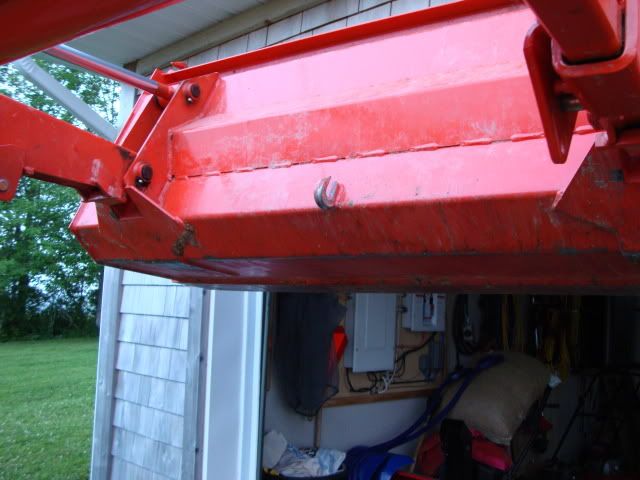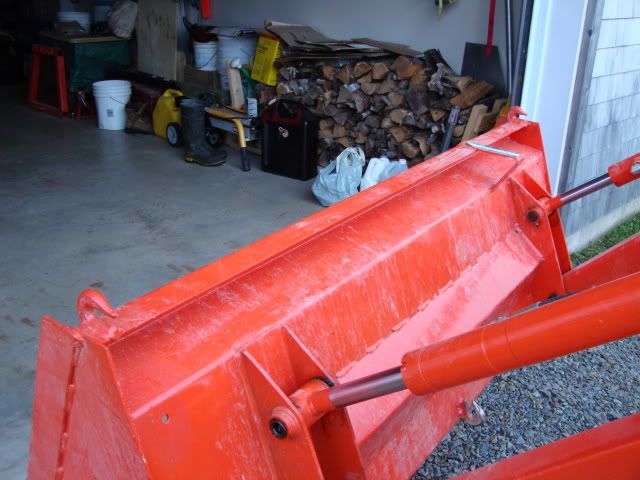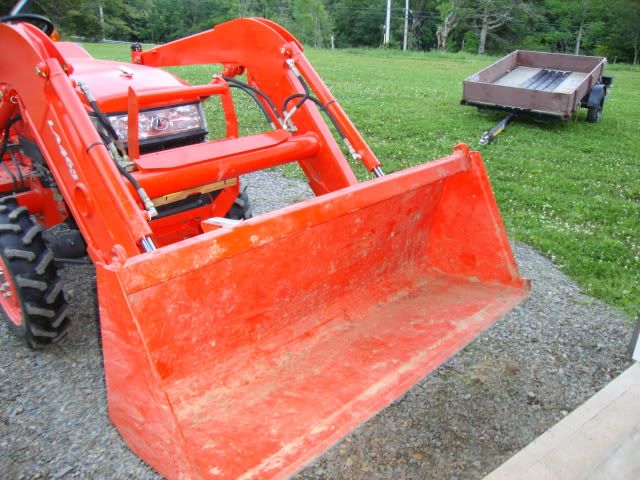picker77
Gold Member
- Joined
- Feb 4, 2006
- Messages
- 385
- Location
- Central Oklahoma
- Tractor
- JD 3032E, dual remotes, TnT, tooth bar, grapple
Took the new 3032E down and had the rear tires loaded today. I had them use a weaker than normal solution of calcium chloride--25 pounds of cc in each tire mixed with 35 gallons of water (no ultra-cold winters in my part of the country, and besides, I keep this tractor inside). I later decided 35 gallons of liquid was too much, I didn't feel it left enough room for air at the top. 25 gallons or so seemed more like it, so I drained them down several gallons worth. With about 28 gallons left in each that should give me around 250 lb per tire, which when combined with my 400# TufLine box blade ought to hold the rear end down just fine for any reasonable bucket load on the front. The JD manual recommends about 800-1000 lb rear loading with the 305 loader. Since I had five 50-lb Kubota cast iron front weights left over from the sale of my old tractor, I was figuring on welding up a weight bracket on the back of the box blade for those, but since I already have around 900 lb back there I'm not going to worry about doing that unless I find what I have isn't enough for some reason. The tractor actually feels more solid and rides better with loaded tires, too. FWIW the tire loading cost me $150 total ($50 for a 50-lb bag of calcium chloride and $100 labor).
I know there are varying opinions and a lot of hand-wringing on using calcium chloride, but my 30-year old Kubota ran loaded fronts and rears from day one and did just fine, and John Deere still recommends using it, so there ya go. The only real downside is fixing a flat (assuming you notice it in time to not let all the liquid drain out!), which entails a truck tire dealer pumping out the liquid, fixing the flat, and then pumping the liquid back in, which means flats ain't cheap to fix labor wise. I had one on the old Kubota that cost me $100 to fix, mostly labor. BTW, that Kubota rim looked just fine inside after umpteen years of calcium chloride in it. I don't know if you can plug a CC'd tire or not, but I'll sure try it first next time. Maybe if a person put the puncture at 12 o'clock and jacked up the tire for a few days to sort of let the puncture area inside dry out a little and then plug it the plug cement would hold?
I also want to put some chain hooks of some sort on the bucket, but I haven't gotten around to figuring out how I want to do that yet. I'm thinking of maybe welding a five foot piece of 4" x 3/8" bar stock across the top of the bucket before any hooks are added. Few things are uglier than a bent bucket top!
I know there are varying opinions and a lot of hand-wringing on using calcium chloride, but my 30-year old Kubota ran loaded fronts and rears from day one and did just fine, and John Deere still recommends using it, so there ya go. The only real downside is fixing a flat (assuming you notice it in time to not let all the liquid drain out!), which entails a truck tire dealer pumping out the liquid, fixing the flat, and then pumping the liquid back in, which means flats ain't cheap to fix labor wise. I had one on the old Kubota that cost me $100 to fix, mostly labor. BTW, that Kubota rim looked just fine inside after umpteen years of calcium chloride in it. I don't know if you can plug a CC'd tire or not, but I'll sure try it first next time. Maybe if a person put the puncture at 12 o'clock and jacked up the tire for a few days to sort of let the puncture area inside dry out a little and then plug it the plug cement would hold?
I also want to put some chain hooks of some sort on the bucket, but I haven't gotten around to figuring out how I want to do that yet. I'm thinking of maybe welding a five foot piece of 4" x 3/8" bar stock across the top of the bucket before any hooks are added. Few things are uglier than a bent bucket top!


